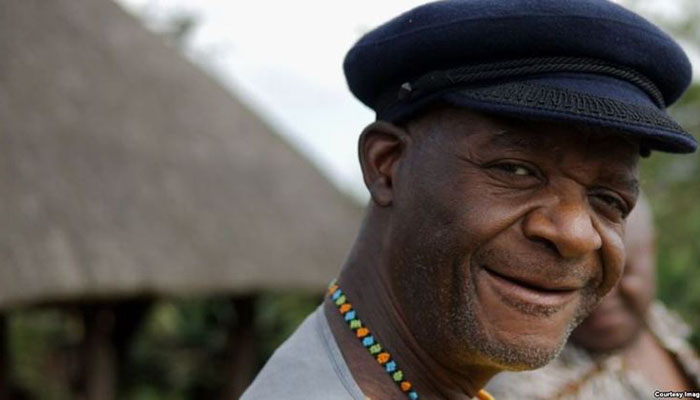Reflecting on infectious ‘Shadows on the Wall’

Elliot Ziwira @the Bookstore
THERE are so many shadows that pursue humanity; shadows that permeate the wounds of the past, the present stupor, the yawning future, shadows everywhere; that it becomes tasking for the individual to locate himself in the many shadows that reflect on the walls of his/her existence.
Gosh! These shadows, gentle reader, are so persistent that they implore you to question the reasons for existence in a world where survival is a game in which the weak and vulnerable scramble for crumbs from the tables of the mighty, and there are no medals for the infirm.
It is against this background that reflecting on Charles Mungoshi’s evocative and timeless short story “Shadows on the Wall” in the collection “Coming of the Dry Season” (1972), becomes refreshingly apt.
The fatalistic nature of relations in the story, the physical human and natural elements, as well as the spiritual space that aggravates suffering, as reflected in the boy-child narrator and his father’s relationship, is both intriguing and heart-rending.
Although there is always the temptation to tilt towards a single narrative, or binary reading of the story “Shadows on the Wall” through inoculation of the vulnerability in both the boy and his father, it is imperative to note that the vulnerability in both instances is a condition, or a state of being, an albatross around the neck of the individual, which he/she strives to shake off.
All the characters in “Shadows on the Wall” are victims in one way or the other, what is paramount, however, is how they find an elixir out of their conditions; and the starting point is for them to identify themselves in the many sites availed to them through imagery and symbolism.
The father, “a hawkish and hovering figure”, who may appear vulnerable and “demonised”, (Muponde, in Chirere and Vambe (eds), 2006:82), embodies oppression at the personal, familial, communal and national platforms. Notwithstanding the physical brawn and brute force exhibited against him, the boy in his small way is able to retaliate through silence and the metaphysical.
The boy may appear mean, hostile and unforgiving, (Muponde, 2006), but there is always the risk of self-shooting if one projects him as a paragon of resistance to any form of oppression at the same time immolating him through demonising him, and glorifying the object of his suffering. Victims are never angels; they will always find vents of escape out of the quagmire they are pushed into.
The oppressed in their seemingly irrational or trivial way, will always find means to escape from the claustrophobia that shapes their existence, and that escape can never be far from being violent, as Franz Fanon posits in “The Wretched of the Earth” (1967). It is also true that resistance is a response to a particular situation, therefore, the source is equally at fault.
“The boy, like most of the children in Memory Chirere’s “Somewhere in this Country” (2006), especially Keresensia, Zhuwawo and Raji, may be rebellious, but who is to blame for the collapse of the familial base? A close reading of the story reveals that the boy-narrator and his father’s relationship has always been fraught with suspicion and counter imagery and symbolism.
As the story begins, we learn from the boy that he is “playing with shadows on the wall”, and that there is “bright sunlight” that “comes in through the doorway,” and his father “blocks most of it”.
We are introduced to the boy’s escape behaviour as he recreates his world, as Muponde (2006) aptly points out. The imagery of the shadows is juxtaposed with that of the “bright sunlight”, (Mungoshi 1972:1).
The contrasting imagery used here is the source of the conflict in that the father sutures hope and sets the boy’s dream ablaze, through his “hawkish and hovering figure”, which blocks the doorway, caricaturing him, or “demonising” him. It is not the boy who denies his father speech, but the father’s relationship with him, as well as his attitude towards his wives and the way he wants him to relate to the two women in his life, rob the boy of “the gift of language”, (ibid:6).
The boy is only responding to a situation that was created over many years; he has learnt a new language from his father, silence. The paralysis, malaise and barrenness of relationships in “Shadows on the Wall” predominantly hinges on the father. The natural armoury that plays havoc on the matrimonial and familial bases has its roots in the violent inclinations of the father, be it psychological, physical and emotional. There may not be physical violence on the part of the boy, but the fact that the father exposes him to the vagaries of nature through neglect as he pursues the women, who are constantly running away from him, leaves the boy psychologically stranded, which is akin to violence in the deeper sense of the personal and familial levels.
A close analysis of the barrenness of his father’s relationships with the two women in his life reveals dictatorial, selfish and brutal tendencies, which make the boy insulate against him and lose the essence of speech. As the other three characters are consumed in their own neuroses, the boy suffers. He remains a victim, albeit a calculating one.
According to Horney (1950), neurosis is a compulsive response to a situation, which the individual fails to understand. She posits that a child’s interpretation of the world is shaped by his or her environment.
At an early age the boy is exposed to a dysfunctional family, where he is exposed to his father’s carnal peccadilloes. He has not always been silent or imbued with the shadows on the wall of his being; escaping through habitual fantasising, and constantly conjuring images of death, other aspects of neurosis, (Boeree, 2002), neither has he always been hostile; his is a response to a neurotic world.
The boy’s father is always following after his wives, firstly, the narrator’s mother, who eventually goes for good, and his second wife, whom we are told he has had to cycle after four times. The two women, like the boy, are victims, and remain vulnerable to the man’s whims. He is determined to keep them apart. By alienating the boy from his mother, the father selfishly pursues his neurotic outlet, in an effort to seek comfort from one of his victims.
The boy intimates: “He taught me to avoid mother . . . I was no longer happy in either’s presence. And that is when I began to notice the shadows on the wall of our hut,” (Mungoshi, 1972:3).
Using the divide and rule tactic, the father plays the boy against his mother, so that he kills affection in both of them, yet he wants the narrator to kowtow to his desire for comfort and consolation. Having robbed him of motherly affection he wants him to call his second wife “mother”, who comes a day after his biological mother has left.
He always sheds tears every time he thinks of the dove nestlings, which he found “dead in their nest because somebody had unknowingly killed their mother in the bush on her way home,” (ibid: 6). The image of the mother here is symbolic in that it articulates what the boy wishes for; filial contact, and it is this that his father robs him of.
The father emasculates the boy and robs him of motherly affection, therefore, it becomes misplaced combat if one were to read the boy as being hostile in his silent voice. Physical contact appears to have died in the past as the father “grumbled” when asked by his wife (the boy’s mother) to carry him on his back, which repels the boy; hence the language he uses to describe him.
Though exhibiting traits of neurosis in response to his situation, as posited by Boeree (2002), Horney (1950), Freud (1904, 1923, 1930) and Jung (1961, 1989), like Shingi in Brian Chikwava’s “Harare North”(2009), and child characters in Chirere’s “Somewhere in this Country” (2006),the boy-child in “Shadows on the Wall”, exudes maturity beyond his age, as he is able to circumvent his suffering through interpretation of the many images that shape his being, availed mostly through his father and nature.
That the boy-narrator is an embodiment, not of individual resistance, but collective resistance to a bastion of oppression, is evidenced by his reference to the dove nestlings and the chickens, whose words he understands. He shares with them the pain of estrangement and abandonment, as well as the language of the oppressed.
The father, as a victim of his own folly, escapes from his talkative new wife through silence and morose behaviour, exposing his vulnerability, just like the dove nestlings and the chickens, but that he should find the solace of conversation in someone, a victim, who is also seeking a vent out of the same oppressive inclinations that he brings on, is a mockery of patience and tolerance. He cannot eat his cake and still have it.
Why are the women running away from him, and why does he keep on pursuing his new wife if she brings him so much sorrow? Unlike his mother and the other woman, the boy has nowhere else to run to, he has to remain put; he has to insulate himself against further emotional assault.
He is far from being evil, neither does he remain innocently spiritually wounded as Zhuwarara (2001) puts it. He sets the tone for resistance in the face of colonial raging storms that pervade Charles Mungoshi’s “Coming of the Dry Season” (1972) and “Waiting for the Rain” (1975), where language is not always vocal. Silence indeed echoes, as Alexander Kanengoni shows in “Echoing Silences” (1997).










Comments